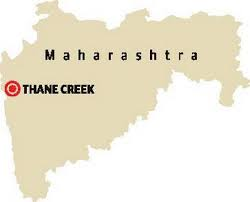Biodiversity & Environment
Eco Sensitive Zone Around Thane Creek Flamingo Sanctuary
- 07 May 2021
- 5 min read
Why in News
Recently, the Ministry of Environment, Forest and Climate Change (MoEFCC) has notified an Eco Sensitive Zone (ESZ) around the Thane Creek Flamingo Sanctuary (TCFS, Maharashtra).
- The ESZ is meant to act as a buffer for protected areas and reduces developmental pressures around a wildlife sanctuary or national park.
Key Points
- About Thane Creek Flamingo Sanctuary:
- It is the second marine sanctuary of Maharashtra after Malvan sanctuary, and lies along the western bank of the Thane Creek.
- It is recognized as an “Important Bird Area” by the Bombay Natural History Society.
- TCFS is home to 39 categories of mangrove species, 167 species of birds like flamingos, 45 fish species, 59 species of butterflies, 67 insect species and mammals like jackals among others.
Thane Creek
- It is an inlet in the shoreline of the Arabian Sea that isolates the city of Mumbai from the Indian mainland.
- The creek is divided into two parts: the Ghodbunder-Thane stretch and the Thane -Trombay (Uran) stretch.
- The creek has been formed due to seismic faults lying below it which runs from Uran to Thane.
Other Protected Areas of Maharashtra
- Sanjay Gandhi National Park
- Tadoba Andhari Tiger Reserve
- Koyna Wildlife Sanctuary
- Bor Wildlife Sanctuary
- Umed Paoni Kardhandla WS
- Sahyadri Tiger Reserve
- Melghat Tiger Reserve
- Navegaon National Park
- Eco Sensitive Zone:
- About:
- Eco-Sensitive Zones (ESZs) or Ecologically Fragile Areas are areas within 10 kms around Protected Areas, National Parks and Wildlife Sanctuaries.
- In case of places with sensitive corridors, connectivity and ecologically important patches, crucial for landscape linkage, even areas beyond 10 km width can be included in the eco-sensitive zone.
- Eco-Sensitive Zones (ESZs) or Ecologically Fragile Areas are areas within 10 kms around Protected Areas, National Parks and Wildlife Sanctuaries.
- Associated Ministry:
- ESZs are notified by the Ministry of Environment, Forest and Climate Change (MoEFCC), under Environment Protection Act, 1986.
- Aim:
- To regulate certain activities around National Parks and Wildlife Sanctuaries so as to minimise the negative impacts of such activities on the fragile ecosystem encompassing the protected areas.
- Regulation of Activities in ESZs:
- Prohibited Activities: Commercial mining, saw mills, industries causing pollution (air, water, soil, noise etc), establishment of major hydroelectric projects (HEP), commercial use of wood, Tourism activities like hot-air balloons over the National Park, discharge of effluents or any solid waste or production of hazardous substances.
- Regulated Activities: Felling of trees, establishment of hotels and resorts, commercial use of natural water, erection of electrical cables, drastic change of agriculture system, e.g. adoption of heavy technology, pesticides etc, widening of roads.
- Permitted Activities: Ongoing agricultural or horticultural practices, rainwater harvesting, organic farming, use of renewable energy sources, adoption of green technology for all activities.
- Significance:
- To minimise the impact of urbanisation and other developmental activities, areas adjacent to protected areas have been declared as Eco-Sensitive Zones as it acts as a shock absorber.
- They also act as a transition zone from areas of high protection to areas involving lesser protection.
- ESZs help in in-situ conservation, which deals with conservation of an endangered species in its natural habitat, for example the conservation of the One-horned Rhino of Kaziranga National Park, Assam.
- ESZs minimise forest depletion and man-animal conflict.
- Challenges:
- Climate Change: The rise in global temperature has generated land, water and ecological stress on the ESZs.
- Local Communities: Slash and burn techniques used in agriculture, pressure of increasing population and the rising demand for firewood and forest produce, etc. exerts pressure on the protected areas.
- About:





